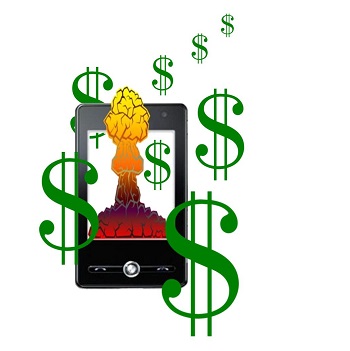As its handset sales remain lower than the Canadian company had hoped, it has slashed 200 jobs.
The restructuring strategy at BlackBerry has been continuing and, on the heels of a job cut affecting 200 people, the struggling Canadian handset manufacturing is now directing its attention toward software.
The company barely has any mobile device models left on the market shelves and their sales simply aren’t cutting it.
Because of this, BlackBerry appears to be shifting its focus in order to send its resources in the direction of mobile apps for consumers and services for businesses – areas in which the company has managed to excel, over the years. The market share of global smartphone sales currently held by the Canadian mobile device maker is a measly 0.3 percent (as of the third quarter of 2015), according to data from Gartner. That said, when it comes to business security software and other forms of applications, the brand is managing to steadily improve its position.
Even the switch that BlackBerry made to Android does not appear to have been enough to boost its smartphone sales.
 John Chen, CEO of the company, announced that the company didn’t intend to step away from hardware and, as a part of that strategy, the company released the Priv smartphone, which was based on Android instead of on its own proprietary operating system. The hope was that the more popular mobile platform, in combination with the exponentially larger availability of mobile apps, would be enough to draw consumers back to the brand. Unfortunately, while it did see an increase in sales, it doesn’t look as though it was enough to rescue its hardware business.
John Chen, CEO of the company, announced that the company didn’t intend to step away from hardware and, as a part of that strategy, the company released the Priv smartphone, which was based on Android instead of on its own proprietary operating system. The hope was that the more popular mobile platform, in combination with the exponentially larger availability of mobile apps, would be enough to draw consumers back to the brand. Unfortunately, while it did see an increase in sales, it doesn’t look as though it was enough to rescue its hardware business.
The device, itself, is quite unique, and it isn’t difficult to see why the company would feel that it had draw for consumers. Its large 5.4 inch touchscreen also offered a slide-out physical keyboard, for users who would prefer the ease of a mechanical way to type. Its 18 megapixel primary camera (which also allows for 4K video recordings) featured autofocus and an image stabilizer. It is NFC technology enabled and offers about 22 hours of battery with standard device usage. It also comes pre-loaded with security and privacy apps. Its retail US price is $699.
That said, while it doesn’t look like BlackBerry has reached the point where it is phasing its smartphones out of production, predictions look as though its hardware options are going to become slimmer as the year progresses.

 Massive companies like Alibaba and Tencent have established a powerful foothold in the mobile payments market. These companies have ensured that it will be difficult for other companies to compete in China. These companies have also succeeded in making mobile payments more secure, which has created a great deal of confidence among consumers and ensuring that they will participate in the mobile commerce space.
Massive companies like Alibaba and Tencent have established a powerful foothold in the mobile payments market. These companies have ensured that it will be difficult for other companies to compete in China. These companies have also succeeded in making mobile payments more secure, which has created a great deal of confidence among consumers and ensuring that they will participate in the mobile commerce space.